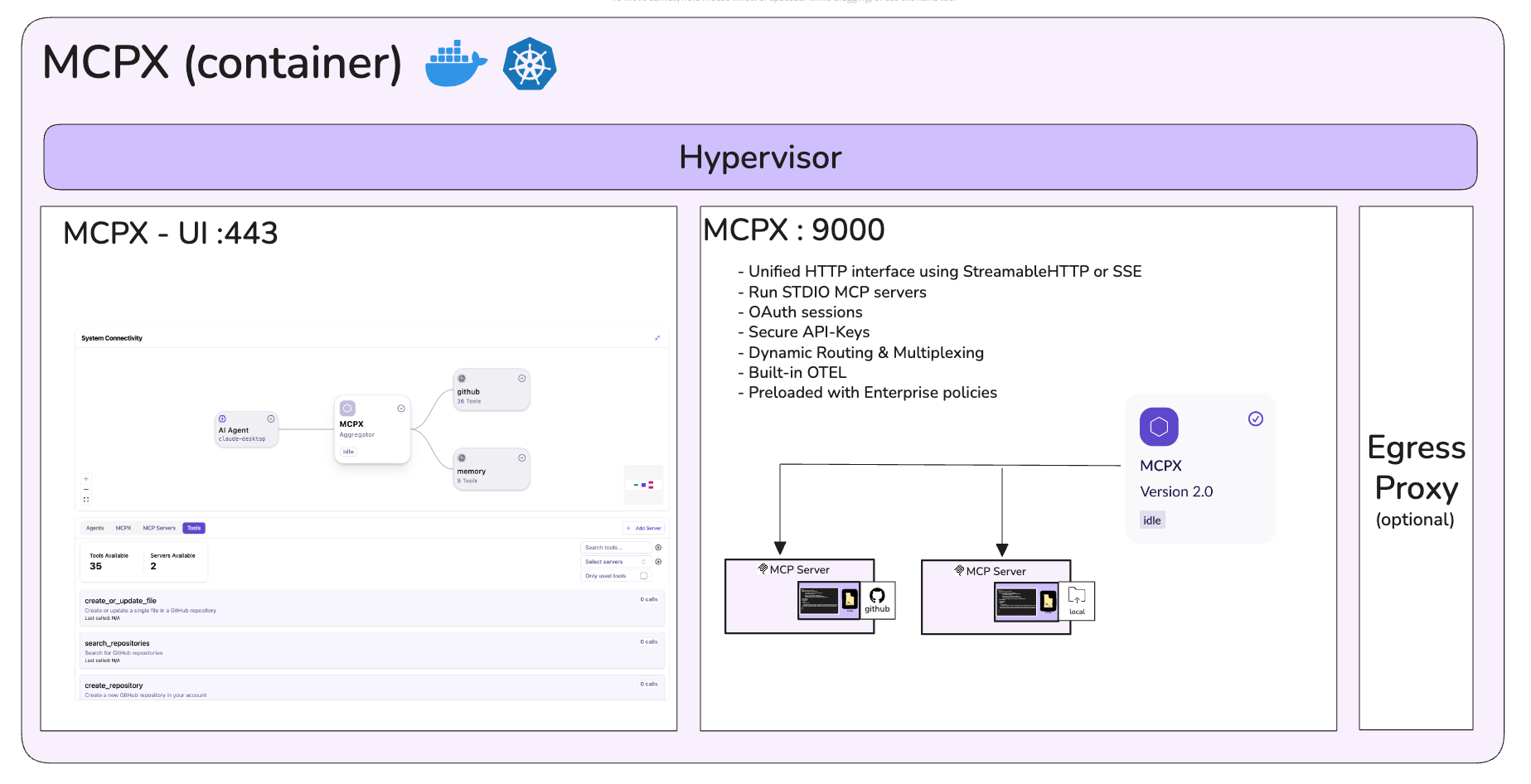Architecture
Lunar.dev MCPX is designed as middleware between your client application and one or more MCP-compatible servers. It simplifies integration by acting as a centralized gateway: your client and LLM only need to connect to MCPX, which handles all the communication with backend MCP services transparently.
This architecture helps you manage complexity, enforce consistent access policies, and easily switch or scale backend tools—without changing your client logic.
Core Characteristics
Single Entry Point - A unified HTTP interface using StreamableHTTP or Server-Sent Events (SSE)—your agent only needs to talk to one API endpoint.
Subprocess Communication via stdio - Tools can be launched as subprocesses using the stdio transport defined by the Model Context Protocol (MCP), enabling lightweight, language-agnostic execution.
Dynamic Routing & Multiplexing - MCPX dispatches tool calls based on configuration and aggregates responses. Tools can be swapped or scaled horizontally without changing client logic.
Zero-Config for Clients - Clients don’t need to know where tools are hosted or how they’re configured—just point to MCPX and go.

MCPX Capabilities
Centralized MCP Servers Provides a consistent runtime environment for MCP servers, ensuring compatibility across different MCP-compatible clients.
Aggregated Tool Catalog Collects tools from all connected MCP servers into a single catalog, making them easier to discover, manage, and integrate.
Granular Client Access Rules Lets you define exactly which tools each client can access, enhancing security and compliance.
Tool Customization Layer Allows administrators to override default tool behavior, block unsafe parameters, and improve accuracy when tools are invoked by LLMs.
Local, Self-Managed Deployment The open-source version runs in ungoverned containers on the user’s endpoint, giving complete operational control.
MCPX currently supports only MCP Tools as targets (not yet full MCP Apps or multi-user contexts).
Next Steps
If you’re ready to start using MCPX:
- Install MCPX – Quick Start Guide
- Connect MCP Servers – Connecting Servers
- Configure Access Rules – Access Control
